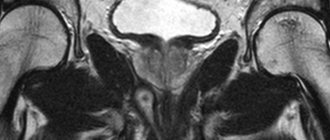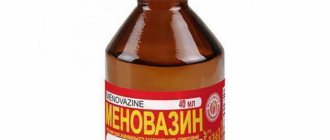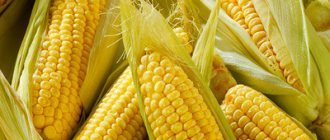Persimmon is useful for maintaining immunity. Regular consumption of the fruit will have a beneficial effect on the condition of the skin, hair, and teeth. The fruit is recommended during pregnancy. For diseases of the gastrointestinal tract, not all products are beneficial. When including berries in a patient’s daily diet, you need to ask whether persimmons are allowed for gastritis.
Eating foods prohibited for gastritis and pancreatitis leads to serious consequences, frequent exacerbations or transition to a chronic form. No medications will cope with gastritis if you ignore a special therapeutic diet. It is important to adhere to the instructions of the attending physician regarding the patient's diet.
During gastritis, the disease covers the surface of the mucous epithelium inside the digestive organ. The main functions of the stomach are not performed fully, digestion problems occur, and the patient develops symptoms that characterize the development of gastritis. This includes heartburn, nausea with vomiting, painful syndrome, and a constant feeling of fullness and heaviness inside the stomach.
The disease is divided into a number of types. One of the varieties is characterized by a high level of hydrochloric acid in gastric juice. Depending on the type of disease, an individual therapeutic diet is developed for a particular patient. Let's try to find out how eating persimmon affects the condition of the stomach if the patient has gastritis with high acidity.
Can persimmons be eaten on an empty stomach? Can persimmons cause stomach pain?
Persimmon is a tasty, but sometimes very dangerous food product. People who regularly suffer from digestive system disorders need to eat this fruit carefully and in limited quantities. In addition, persimmons should never be eaten on an empty stomach (empty stomach)!
The fact is that the berry is rich in pectin and tannins. They are capable of causing “sticking” of those pieces of food that have not been digested. This contributes not just to constipation, but to the formation of “bezoars” - fecal stones that block passage through the intestines and impair peristalsis.
IMPORTANT: This is why a person may feel pain in the stomach after eating persimmon.
Erosive acute gastritis
For patients suffering from an acute form of erosive gastritis, it is better to temporarily stop eating persimmons. If the patient ignores this advice, the development of the disease will significantly accelerate and there will be a high risk of irreversible consequences. With this type of gastritis, the gastric mucosa is not only inflamed, but also covered with small defects. Substances contained in persimmons cause cramps and sharp cutting pain in the abdomen.
Persimmon is completely contraindicated for stomach ulcers, despite its many positive qualities. This fruit is especially strictly prohibited in the stage of active exacerbation of the pathology. This ban also applies to duodenal ulcers. With this serious illness, you need the most gentle diet possible, consisting of foods with easily digestible fiber and that do not harm the affected mucous membrane. It is permissible to use persimmon for ulcers in the form of jelly. This drink can be included in the daily menu, but only after prior consultation with your doctor.
Video on the topic:
How long does it take for persimmon to be digested in the stomach?
Digesting persimmons is a long and lengthy process that has its pros and cons. Persimmon is good because it gives you a feeling of fullness for a long time, but it is dangerous because the digestion of this product lasts 3-4 hours. That is why nutritionists recommend eating persimmons separately from other foods (not combining them with other difficult-to-digest foods) and not overeating the fruits.
How can and cannot you eat persimmon?
Precautionary measures
An acceptable menu option with persimmons is to eat one berry per day. There are other conditions that the patient should remember about. For example, constipation is caused by eating unripe berries.
If the patient purchased an unripe berry in a store, the persimmon will ripen completely at home - leave the fruit for a day in a warm place. The taste will immediately change, and the risk of various incidents will decrease. Unripeness is recognized by its taste, which differs from the usual characteristic of the berry by its viscosity and astringency. When ripe, the fruit has a jelly-like pulp.
It is recommended to get rid of the abundance of tannin by putting the fruits in the freezer. Leave for 10-15 hours. When defrosted, the fruit will become softer, sweeter, and the abundance of tannin will disappear. In hot water (temperature from 30 to 40C) you can achieve a similar result. A special option is to put the berries in the company of tomatoes and apples. The latter release ethylene, and the persimmon ripens on its own.
There are varieties that always seem to taste unripe - for example, “Korolek”.
If the berry has spoiled (rotten, mold has appeared), the fruit is immediately thrown away. Consumption of a product affected by spoilage has an extremely negative effect on the damaged pancreas.
How to choose persimmon
To play it safe, take a closer look at the appearance of the fruit. Ripe persimmons have a smooth, almost shiny surface, the skin is thin, and the contents are translucent. The denser the fruit, the higher the likelihood of acquiring an unripe berry picked too early.
Sometimes brown stripes are noticeable - not dirt or damage, as some buyers think - on the contrary, such a pattern is an indicator of the sweetness of the berry. The sweeter, the more sugar. Usually this is a good indicator, but for a person with pancreatitis it is the opposite.
The stalk, often sold with the fruit, indicates ripeness. The leaves should be dry and the color should be dark brown or brown. Avoid berries that do not fit the description given.
Stores often offer unripe, low-quality goods. You can look for ripe persimmons at the market. When purchasing, mark the variety that suits you and the one that caused you unpleasant sensations - being observant will help you maintain your well-being on the verge of health.
For greater confidence and a final answer whether a patient with pancreatitis is allowed to eat persimmon, consult your doctor. The doctor knows the characteristics of the patient’s disease and will be able to offer useful advice.
Is it possible to eat persimmons with chronic pancreatitis of the pancreas?
Many people like persimmon, but what about those who suffer from pancreatic inflammation? The assimilation of the fruit, or rather its sugars that it contains, requires the production of insulin by the body. It is the pancreas that produces insulin.
This becomes an obstacle to eating persimmon for those who suffer from pancreatitis (especially in acute forms). In addition, tannin, which is so abundant in persimmons, provokes constipation and intestinal obstruction, which negatively affects the entire digestive process.
IMPORTANT: You can eat persimmons during pancreatitis, but in small portions and when you are not experiencing acute forms. You should not “overload” the pancreas, so as not to aggravate your condition.
How to eat persimmon during the period of remission of the disease:
- Provide a kind of complementary feeding by eating only 1 tsp. pulp per day.
- Increase your persimmon portion regularly
- Eat persimmons separately from other foods, but not on an empty stomach.
- For food, choose only sweet persimmons, such as honey or chocolate kinglets.
IMPORTANT: To avoid harming yourself, do not eat the skin of the persimmon, eat only the pulp with a spoon. The skin of the fruit is quite rough and very difficult to split.
Can persimmons be consumed by those who suffer from pancreatitis?
How it grows
At the end of autumn, bright, healthy persimmons, pleasing the eye with their sunny color and delicious taste, appear on the shelves of shops and markets. Due to high demand in world markets, this tropical plant is grown in areas with warm climates: Australia and China, Japan, South America, and Eurasia. When ripe, the fruits become bright orange, with a glossy skin.
Exotic, “non-standard”, but no less useful species include: “Velvet Apple”. It grows in the Philippines and has a velvety, peach-like skin and a red color. "Chocolate pudding". Popular in South America. One fruit reaches a weight of 900 g. When ripe, it turns chocolate brown. Flat. Grows in Paraguay. Caucasian. Some species have fruits no larger than traditional apricots or peaches - up to 4 cm in diameter.
When choosing a type of persimmon, most people give preference to the king. Its fruits are less astringent and have an oblong shape. What is the difference between persimmon and king? Only the floor. Ripening on the same tree, the pollinated female berries are called persimmons, and the pollinated berries are called male berries. Caucasian, Japanese, and Chinese varieties are no less in demand. Unlike the astringent persimmon, sharon is seedless, contains no tannins, and has firm, light orange flesh.
Is it possible to eat persimmons if you have colitis or cholecystitis?
Persimmon is unique in that it contains a huge amount of useful vitamins and other microelements. Pectin, which is very abundant in persimmons, makes the fruit a dietary product. That is why this berry is allowed to be introduced into their diet by those who suffer from a disease such as colitis or cholecystitis.
In order not to harm your body, choose fruits that are as ripe as possible or as sweet as possible (by the way, sugars in fruits are no more than 20%). For colitis and cholecystitis, you can use both fresh and cooked persimmons (jelly, compotes, soufflés, preserves, marmalade).
How to choose a berry in a store
For patients with gastritis and ulcers, it is important to eat fruits containing a minimum of tannins. By what signs can you distinguish ripe berries from unripe ones? First of all, you need to pay attention to the leaves. If they are still green, the fruits have not reached the desired condition. Their taste will be astringent and they contain less vitamins.
On the surface of sweet varieties there is a kind of dark brown cobweb, and there are black marks around the stalk. These berries are heart-shaped or look like a small pumpkin.
If there are small dark spots on the fruit, this is normal. You can eat such persimmons without fear. But if the spots are large, then the fruits have already rotted. Eating them can lead to food poisoning, and there will be little benefit from such a berry.
Ripe persimmons have a dark orange or brownish tint. The peel is shiny, translucent. The fruit is elastic and soft to the touch, and the internal contents have a jelly-like consistency.
The most suitable variety for patients with gastritis is “Korolek”. You can distinguish it from others by its dark color and the presence of seeds inside. But! Often sellers under the guise of the Korolek variety sell cheaper varieties of persimmon. Therefore, it is better to buy one fruit for testing and cut it at home.
Is it possible to eat persimmons if you have gout?
Gout is an unpleasant and chronic disease, which, first of all, is a consequence of impaired metabolism in the body. As a result, uric salts and water are deposited on the joints and bones. The diet for gout should always be “diuretic” and highly fortified.
Why are persimmons good for gout patients?
- It has a strong diuretic effect on the body, expelling excess water from the body and helping it not to stagnate in soft tissues.
- Persimmon restores tone to the body, which is so lacking during illness.
- The performance of the body, which is fueled by persimmon, is always higher and more active.
- Fiber contained in persimmon improves digestion
- A rich supply of microelements improves the functioning of the kidneys and genitourinary organs.
Persimmon is a valuable and nutritious food product for those who adhere to diets
Contraindications
Persimmon fruits contain a large amount of glucose, so people with diabetes should use it with caution . You shouldn’t completely exclude fruits from your diet, but you will have to monitor the amount you eat.
- Due to the tannin it contains, persimmon fruits are difficult to digest . Therefore, nutritionists do not recommend giving it to children under three years of age or to patients after gastrointestinal surgery.
- Persimmon should be excluded from the diet in case of adhesions and intestinal obstruction, as well as a tendency to constipation.
- You should not eat berries during exacerbations of peptic ulcers or pancreatitis. In rare cases, persimmons can cause allergies. This is due to the high iodine content in fruits.
Is it possible to eat persimmons if you have heartburn?
Heartburn is a burning sensation that originates in the stomach and is felt throughout the sternum. Heartburn is an excessive increase in acidity. You can “calm down” heartburn and make it go away easier with the help of “non-acidic” foods. Persimmons, for example, contain very few acids and a lot of fiber, which “blocks” the exacerbation of heartburn.
IMPORTANT: However, fruits that are too tart and sweet should be avoided so as not to make heartburn unbearable.
What features do persimmons have?
Possible harm
The product is exotic, unusual for our body. Excessive consumption may lead to negative effects. Increased gas formation is possible as a result of fermentation processes in the intestines.
Contraindications include:
- hypersensitivity of the body;
- exacerbation of peptic ulcer, gastritis with high acidity;
- irritable bowel syndrome;
- with a tendency to constipation;
- diabetes;
- diseases of the bladder and kidneys during periods of exacerbation;
- dermatological disease in the acute stage.
Is it possible to eat persimmon with thyrotoxicosis of the thyroid gland?
Persimmon is a storehouse of vitamins and minerals. This is one of the few foods that has a beneficial effect on the thyroid gland, restoring its function and helping to produce vital hormones. Persimmon strengthens the immune system, protects against vitamin deficiency and enhances the body's protective functions.
IMPORTANT: With thyrotoxicosis of the thyroid gland, persimmon helps restore the functioning of this internal organ and normalize the body's metabolism.
Composition and nutritional value
Persimmons are superior in minerals and vitamins to grapes, apples and figs. Its composition includes:
- potassium,
- magnesium,
- sodium,
- iodine,
- iron,
- manganese,
- provitamin A (beta-carotene),
- routine,
- ascorbic acid.
The juicy color of the berry is due to the presence of beta-carotene, which has a beneficial effect on vision.
Beta-carotene strengthens the eye muscles, increases visual acuity, and prevents the formation of cataracts. It also takes care of the respiratory organs, preventing the development of diseases of the bronchi and lungs. Persimmon serves as a preventative against kidney stones.
The magnesium contained in it binds and removes sodium salts. Potassium regulates water-salt balance and relieves swelling. Iodine stimulates the activity of the thyroid gland and accelerates metabolic processes.
Persimmon contains organic acids (malic, citric), tannins, starch, glucose, fructose. The fruit contains no less antioxidants than green tea. Despite its low calorie content, only 60 kcal per 100 g, persimmon satisfies hunger well, leaving a long-lasting feeling of fullness.
Fruits rich in fiber improve digestion, normalize intestinal motility, and cleanse the body of toxins . Polysaccharides and monosaccharides support heart function, and vitamins C and P make blood vessels elastic. In dried form, the fruits are used in the treatment of hypertension. Nutritionists recommend including persimmons in the diet for people suffering from varicose veins, tuberculosis, and hemorrhoids . The iron-rich berry relieves anemia.
Persimmon is endowed with bactericidal properties and is effective, including against the causative agent of gastritis. It copes with infections such as Staphylococcus aureus and Escherichia coli .
Vitamin C contained in persimmons strengthens the immune system and helps overcome seasonal depression . The berry normalizes sleep and has a calming effect on the nervous system.
Dietary dishes with fruits
Including fruits in light, healthy meals is a way to diversify the diet of a person affected by an ulcer, as well as saturate the body with all useful substances.
Fruit curd mass
Ingredients: cottage cheese (10 spoons), milk (4 spoons), apples (2), sugar (2 teaspoons). You can add a little salt.
Cooking procedure. Apples are baked in the oven. While the apples are in the oven, puree the cottage cheese, adding milk to it. Baked apples are pureed until smooth, and the resulting puree is combined with cottage cheese. Next, you need to add sugar and beat the resulting mass.
Apples can be replaced with pureed berries. The dish turns out tasty and healthy.
Thematic video will tell you about the diet for stomach ulcers:
Curd pudding with apples
Ingredients: a pack of low-fat cottage cheese, 2 small apples, 8 teaspoons of white bread crackers, 2 teaspoons of sugar, an egg, a spoonful of vegetable oil.
Cooking procedure. Rub the cottage cheese through a sieve, remove the peel from the apples, and grate them. The components are mixed. Add yolk, sugar, crackers, and pre-beaten egg white to the mixture.
The composition is mixed, then placed in a greased form. It must be placed in a water bath and kept in boiling water for 45 minutes. To decorate the pudding, honey and pureed berries are used.
Apple nests with curd filling
For apple nests, you need to cut the apples in half.
Ingredients: 150 g of cottage cheese, a spoonful of sour cream, 3 apples, a teaspoon of semolina, a spoonful of raisins, a spoonful of sour cream, an egg, a spoonful of sugar, cinnamon, butter, which will be used to grease the mold.
Cooking procedure. The apples are cut in half, a small amount of pulp is removed from them to make a depression for the filling.
Combine pureed cottage cheese, steamed raisins, semolina, apple pulp, cinnamon, egg, sugar.
Everything is mixed and placed in apple baskets. The baskets are then placed on a baking sheet. Keep everything in the oven until they begin to brown. When serving, you can pour sour cream over the nests.
Baked apples
What you need: 3 apples, 3 teaspoons of sugar, vegetable oil.
Cooking procedure. Washed apples are cored and seeded. Sugar is poured into the cavity and water is dripped. Can be put in the oven. Baked apples are poured with honey and vegetable oil.
Apple cream
Ingredients: apple, egg, sugar (2 teaspoons). Cooking procedure. First, you need to bake the apple and make a puree out of it. After breaking the egg, separate the yolk from the white.
The yolk is mixed with sugar and the mixture is slightly heated. Do not bring to a boil. The yolk mixture is added to the applesauce. Whipped protein is also added to the warm apple-yolk mixture. When the cream has cooled, it can be served.
Pears in syrup
Ingredients: 2 pears, sugar (2 spoons), 150 ml of water. Cooking procedure. The pears are peeled, the seeds are removed, then the fruits are boiled in water with sugar.
After bringing to readiness, gradually cool in syrup. When serving, pears should be poured with the syrup in which they were boiled.
Grape jelly
Ingredients: 5 tablespoons grape juice (red or white), 4 teaspoons sugar, 10 tablespoons water, 2 teaspoons gelatin. Cooking procedure. Soak the gelatin in water until it swells. Boil water with sugar, pour in the juice. Remove the saucepan from the heat, add gelatin little by little to the syrup, mix everything.
When the gelatin has dissolved, you can pour the composition into molds. It is better to pre-moisten the molds in cold water and sprinkle with sugar. When the jelly has hardened, you can serve. To make the jelly come off easier, the molds can be briefly immersed in warm water.
Apple compote
Ingredients: 3 apples, one and a half glasses of water, 3 tablespoons of sugar. Cooking procedure. Apples are peeled and seeded, cut into slices and placed in boiling water with sugar. You need to boil the compote for several minutes. Then it is cooled and drunk.
Berry jelly
Berry jelly.
Ingredients: 3 tablespoons of raspberries, strawberries, currants, 2 tablespoons of sugar, 2 teaspoons of starch, 2 glasses of water.
Cooking procedure. The washed berries must be rubbed through a sieve and the juice separated from the mass.
Place the juice in a cool place, and mix the berry mass with water, sugar, and bring to a boil. The resulting composition is filtered through a sieve.
The starch is diluted in cold water, and then poured into the syrup, placed on the stove, and brought to a boil. When the jelly is ready, add berry juice to it.
Conclusion
Persimmon is an irreplaceable source of many useful, unique substances for the human body. And not only in fresh, but also in dried form. However, you should not get too carried away with an unusual food product, especially for people diagnosed with gastritis. The main thing is to know moderation in everything and then the useful gift of nature will not cause harm.
Today, such a disease as gastritis is familiar to almost every person. In order to somehow improve your well-being, you have to drink various pharmaceuticals and follow diets, but sometimes you really want to pamper yourself without harming your body. Are persimmons safe for gastritis?
Information about the types of gastritis will help you determine what needs to be excluded from your usual diet, whether you can eat persimmons, and what benefits or harms there are from this exotic delicacy.
General recommendations
Experts advise patients suffering from gastritis to monitor the quality and quantity of food consumed. To avoid overloading your stomach, you should eat little but often. Serving size is 200-250 ml.
- Those who are accustomed to finishing lunch or dinner with a drink should remember that drinking liquid immediately after a meal dilutes the gastric juice. This negatively affects the absorption of food. The interval between the main course and drinks should be at least half an hour.
- Pharmacological drugs have a negative effect on the stomach. The task of a person suffering from gastritis or an ulcer is to minimize the risk of such exposure. The choice of medications must be taken responsibly, coordinating any drug taken orally with the attending physician .
A healthy lifestyle is the basis for the treatment and prevention of gastrointestinal diseases. Doctors do not encourage alcohol abuse, but gastroenterologists do not impose a ban on drinking. You just need to follow the norm and choose the drinks correctly (is it possible to have wine if you have gastritis?).
But regarding nicotine, experts are more categorical. Smoking interferes with recovery, provokes regular exacerbations and leads to complications of the disease.
In the countries of the East, where persimmon grows, it is called “Food of the Gods.” This name is explained not only by its amazing taste, but also by the high content of useful substances in persimmons. The maximum concentration of macro, microelements and vitamins is reached when the fruits are fully ripe. It is during this period that their collection begins.
There are about five hundred varieties of persimmon. This evergreen plant has high nutritional value, and we benefit not only from the fruits, but also from the leaves, bark, and roots.
How healthy is “a fruit with juicy pulp”? Is it possible to eat persimmons for gastritis? How dangerous is it during exacerbation of diseases of the gastrointestinal tract? Let's find out the details by answering all the questions.
Composition, calorie content
Orange fruits contain:
- carotenes;
- manganese;
- vitamins A, C, H, PP, group B;
- sodium;
- dietary fiber;
- amino acids;
- magnesium;
- polyunsaturated acids;
- potassium;
- chromium;
- aluminum;
- organic acids;
- molybdenum;
- phosphorus;
- iodine;
- antioxidants;
- iron;
- flavonoids;
- sulfur;
- tannins;
- copper;
- polyphenols;
- fructose;
- folic acid;
- fluorine;
- calcium;
- phytoncides;
- beta-carotene;
- pectin.
The exotic fruit is an important supplier of magnesium and calcium for the body. It is noteworthy that persimmons are 80% water. Thanks to this, it is low-calorie - only 65 kcal per 100 g.










